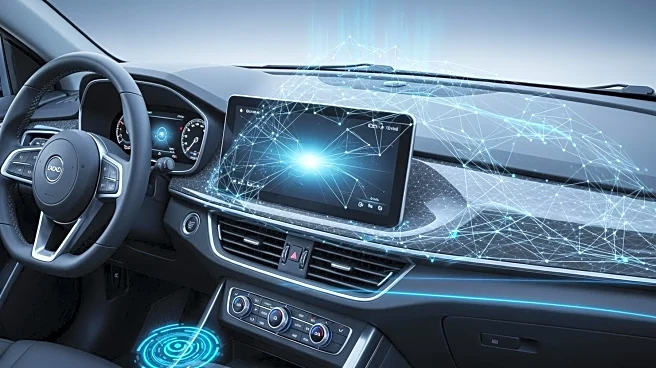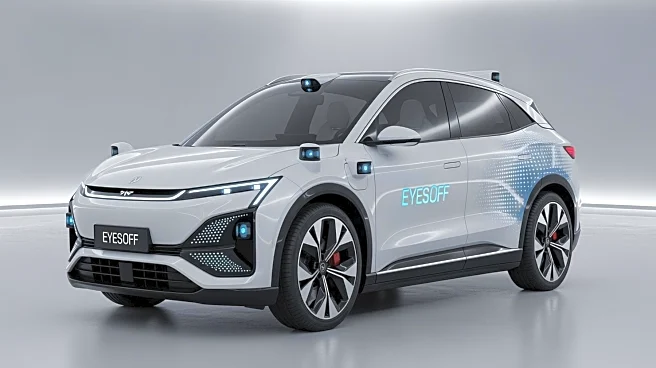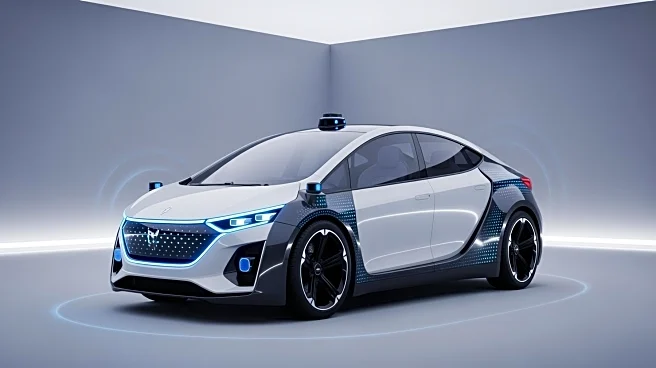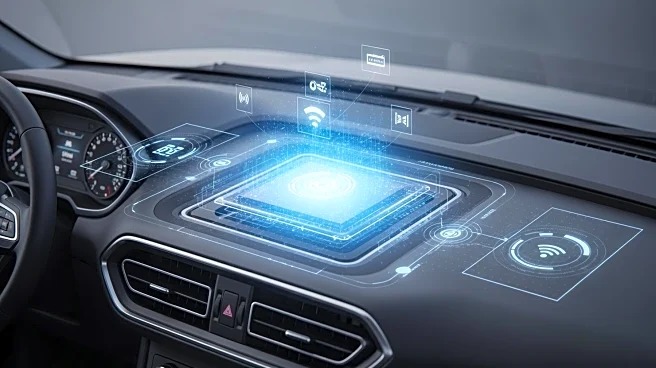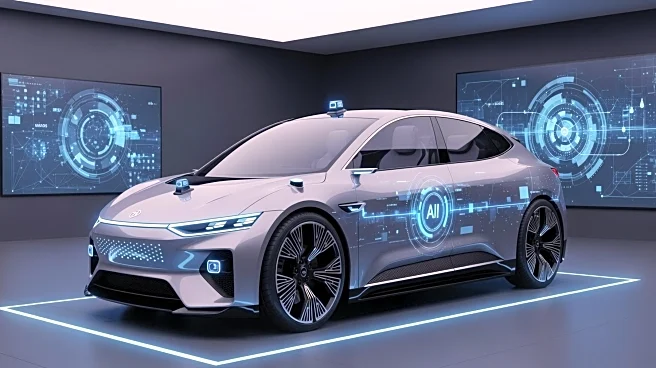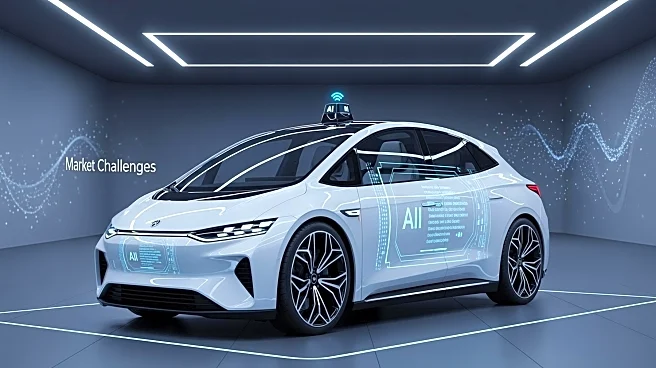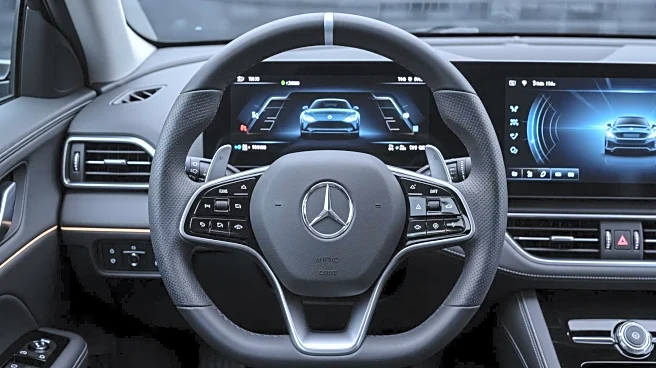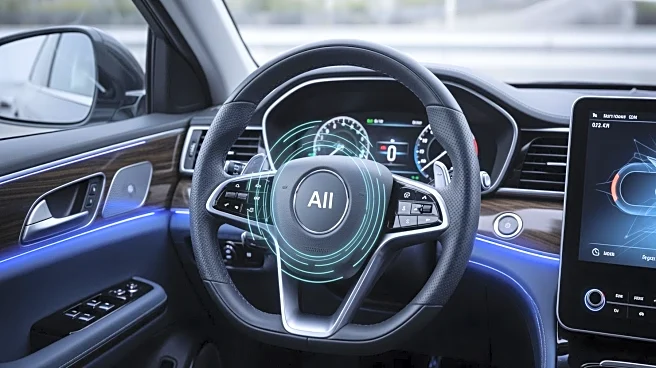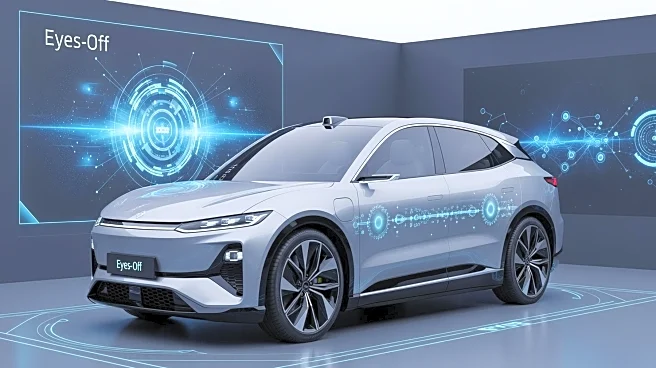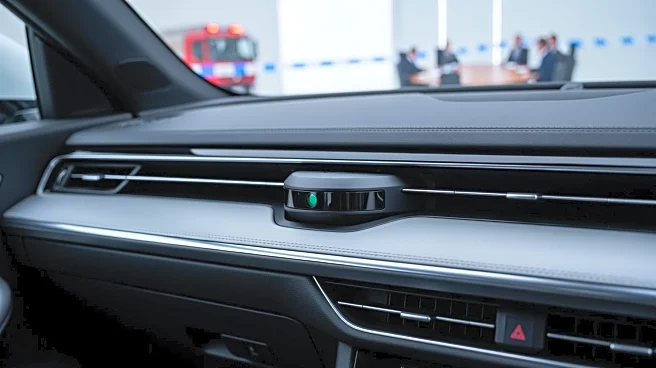What's Happening?
General Motors (GM) has announced the launch of a centralized computing platform and next-generation electrical architecture for its vehicles, set to begin with the Cadillac Escalade IQ in 2028. This new design consolidates numerous electronic control
units into a unified computing core, which coordinates vehicle subsystems in real-time. The platform aims to simplify design, improve reliability, and enable faster software updates. Currently, over 4.5 million GM vehicles can receive over-the-air updates, with this number expected to grow by approximately two million annually. The new system promises to deliver ten times more software updates for new features than GM's previous system, with significantly increased bandwidth for connectivity, entertainment, and AI workloads. The architecture builds on GM's Vehicle Intelligence Platform, launched in 2020, and connects various vehicle systems through a high-speed Ethernet backbone.
Why It's Important?
The introduction of GM's centralized computing platform marks a significant advancement in vehicle technology, enhancing connectivity and responsiveness. This development is crucial for the automotive industry as it addresses the growing demand for smarter, more connected vehicles. By enabling real-time safety updates and continuous connectivity, GM is positioning itself as a leader in the integration of advanced technology in vehicles. The platform's ability to support both electric and internal combustion vehicles ensures GM's flexibility in adapting to future market trends and consumer preferences. Additionally, the architecture's design allows for hardware freedom, enabling GM to upgrade components without rewriting core code, which could lead to cost savings and increased efficiency in manufacturing.
What's Next?
As GM rolls out this new computing platform, the automotive industry can expect a shift towards more integrated and intelligent vehicle systems. The platform's capabilities for real-time responsiveness and continuous connectivity may lead to advancements in autonomous driving technologies and enhanced infotainment systems. GM's approach to consolidating software updates and maintaining standards for safety and cybersecurity will likely influence other automakers to adopt similar strategies. Stakeholders, including technology providers and automotive suppliers, may need to adapt to GM's new architecture, potentially leading to collaborations or innovations in vehicle components and software solutions.
Beyond the Headlines
The centralized computing platform could have broader implications for the automotive industry, particularly in terms of cybersecurity and data management. As vehicles become more connected, the need for robust cybersecurity measures will increase to protect against potential threats. Additionally, the platform's ability to handle large amounts of data could lead to new opportunities in data analytics and personalized vehicle experiences. The shift towards a unified computing system may also impact regulatory standards and policies related to vehicle safety and technology integration.
